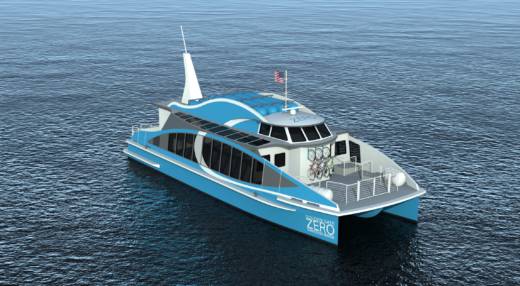The Bay Area will soon welcome the nation’s first energy efficient ferry, powered by hydrogen fuel cells, a green technology that its inventor hopes will revolutionize the global maritime industry.
Alameda startup Golden Gate Zero Emission Marine announced on Monday that it had won a $3 million grant from the California Air Resources Board to help develop the “Water-Go-Round” passenger ferry.
The prototype is the brainchild of Joseph Pratt, an engineer who has researched hydrogen fuel cell technology for 20 years. The catalyst for the Water-Go-Round was a study he led during his work at Sandia National Labs, where he helped develop fuel cell technology for use in cars, among other applications.
The study, conducted in 2015 and 2016, looked at the feasibility of developing a high-speed ferry powered only by hydrogen fuel cells.
“It was a real stretch from what had been previously done,” he said in an email, “as we were both challenging the limits of the technology as well as exploring the feasibility in a much greater depth than ever before.”
